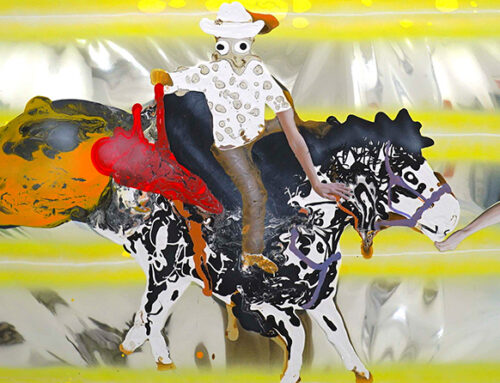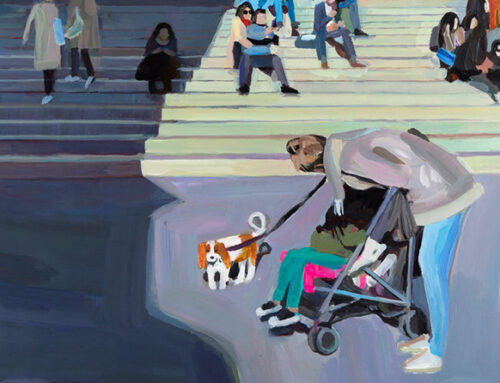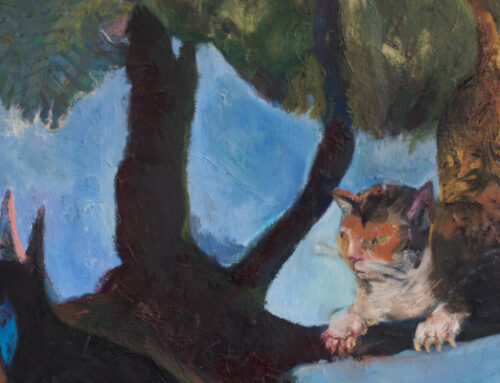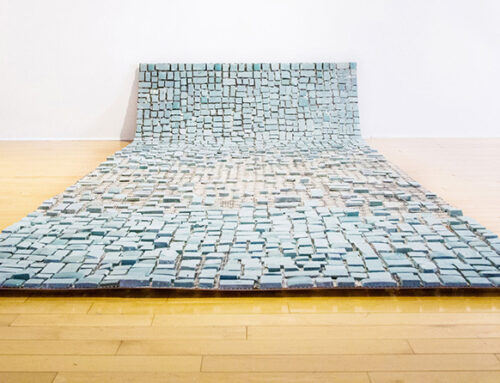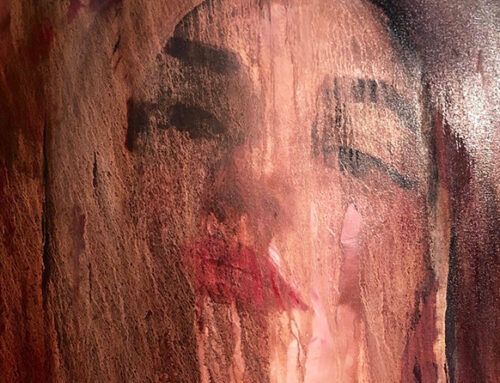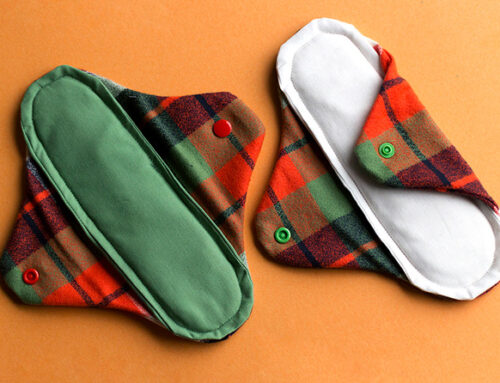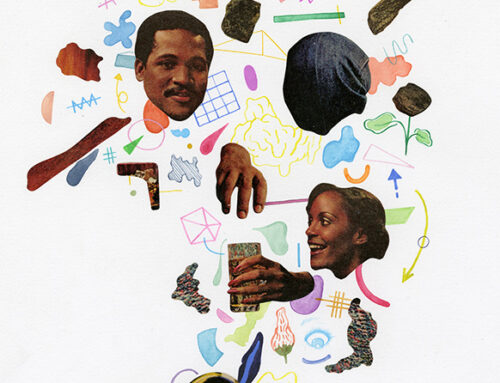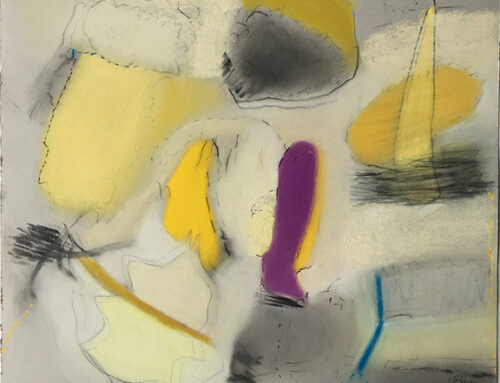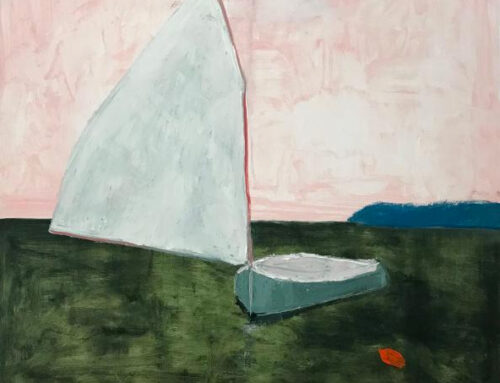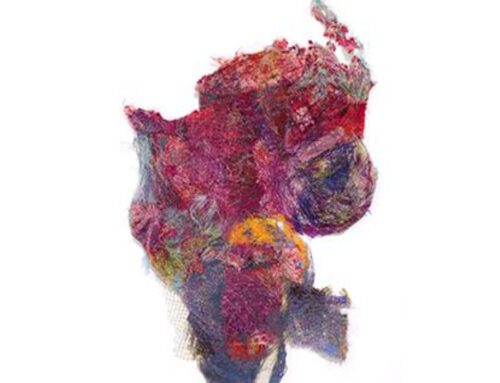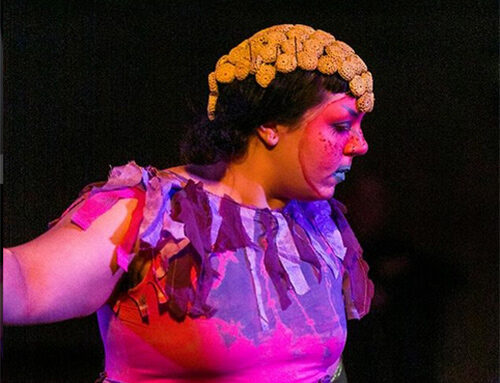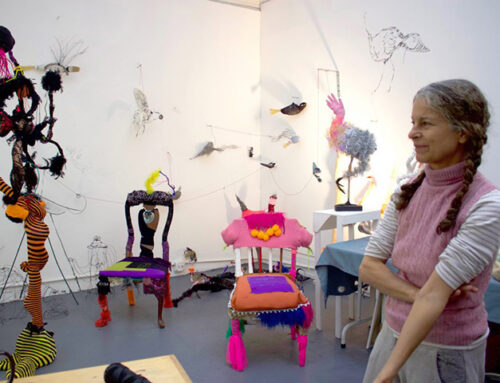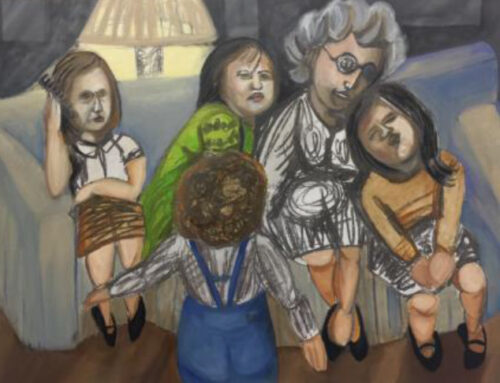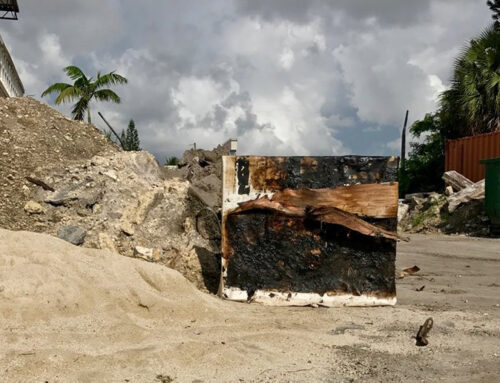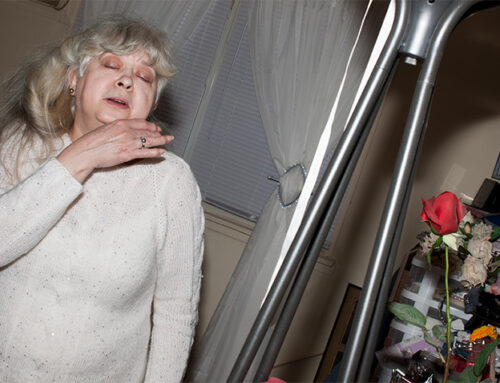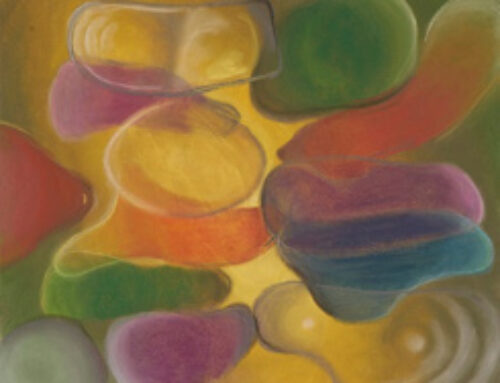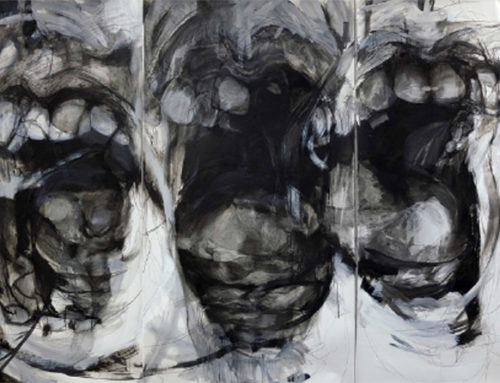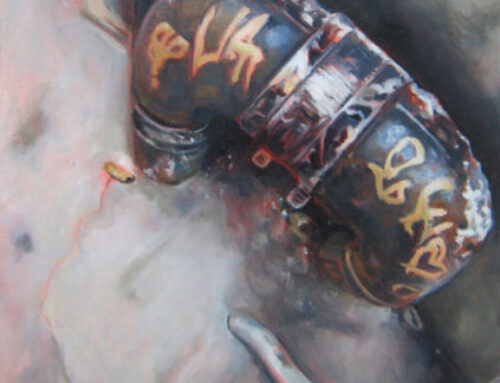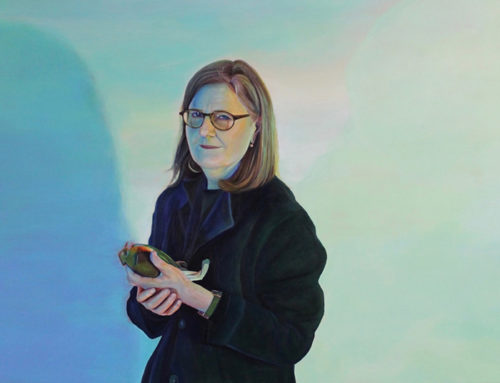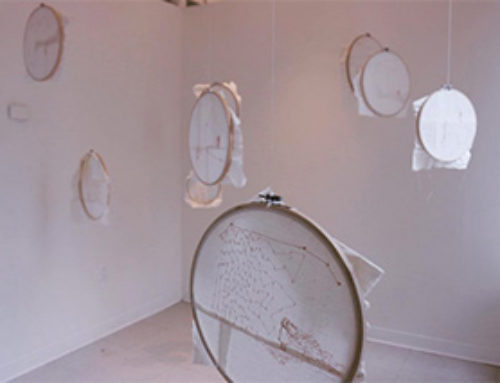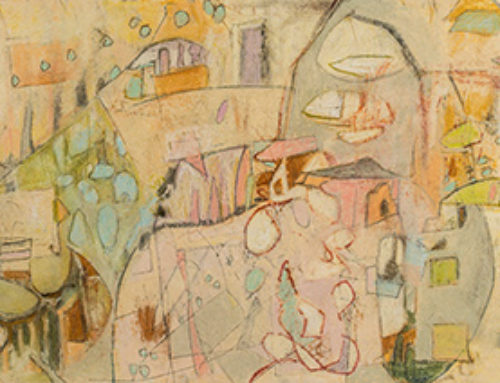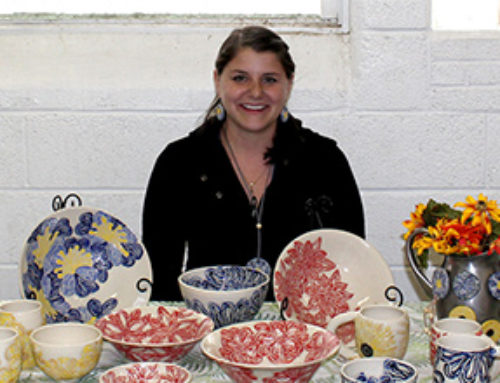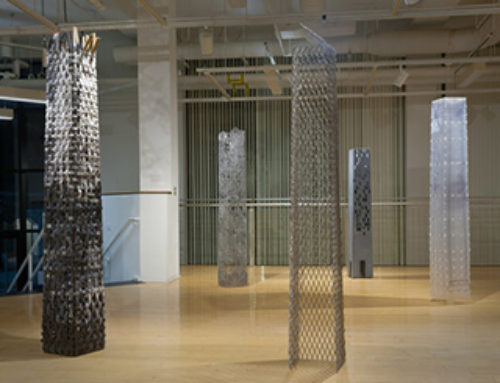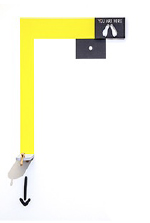
Diver
Paper, clay gouache, laser
cut paper, 3″ x 18″ x 11″
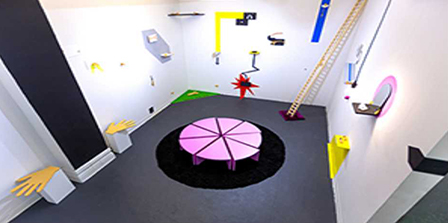
Mind Map of Love and Longing
Paper collage, paper clay sculptures, gouache, 40_TV monitor, vinyl, wall paint
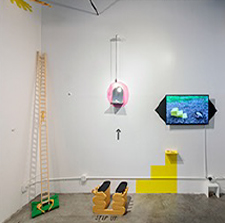
Mind Map of Love and Longing
Paper clay, MDF, wood, TV monitor, vinyl wall paint, vinyl
11′ x 5′ x 9′
MARIANNA PERAGALLO | INTERVIEW QUESTIONS
Q. How did your passion for art begin taking shape for you—at home, school, a mentor, and other artists who inspired you or a personal experience that started the fermenting process?
A. I have always liked making things but I didn’t really know what it meant to be an artist until my early 20’s. I had an amazing professor at the University of the Arts named Jeanne Jaffe. She interviewed me for the program and at the end of our interview, she said “you really want to be an artist,” which was the first time I felt someone taking me seriously. I started working for some established female artists during my senior year of college and was so inspired by their commitment to their artwork. I feel like I got lucky. I knew I wanted to be an artist, and over the years, as that definition evolved, I continued to feel like it’s the only path I want to follow. The artists I know and love are so passionate and wear many hats. They are educators, entrepreneurs, collaborators, culture producers, parents, etc, in addition to being makers. I love that versatility.
Q. How would you describe your artwork, in terms of materials or mediums? Has it changed or evolved since formal training and what are your goals for it?
A. My recent work includes installations with drawings, sculptures, and animations that create opportunities for emotional connection. The works deliberate love in a playful manner, offering a disarming and empathetic space that highlights the painful, absurd, and joyous moments on the journey towards finding love.
The type of work I make and the materials I use have been an organic, intuitive evolution. My material choices depend on the project. When I was a kid, I loved making small, intricate sculptures out of clay. I mostly made toys and food for my stuffed animals. In a way, I think I’ve returned to that mode of making. It brings me so much joy to make sculptures, and they always start small and intimate. My formal training has honed my ability to think critically about my material choices and how they support the ideas in my work.
Q. How important is a personal style to you as an artist or does your work reflect larger social and cultural issues?
A. I do have a personal style that has become important to translate the concepts in my work. I use bright colors to create an energetic, stimulating, whimsical space that recreates the world of children’s toys and storybooks. My sculptures and drawings are caricature-like and can feel endearing, but verge on the grotesque with their exaggerated gestures. Their surreal and cartoon-ish qualities allow them to become parodies of life that create distance for reflection and introspection.
Q. Has being a woman affected your work and others’ perception of it? How do you feel about being a part of a woman’s art organization?
A. Being a woman is central to my work and my understanding and experience of love, which has been at the center of my research over the last year. The imbalance and misrepresentation of love is a heavily gendered issue. In bell hooks’ All About Love, she points out: “men theorize about love, but women are more often love’s practitioners.” Reading this affirmed something that I had experienced: love is seen as frivolous, particularly when women talk about it. Love is quickly devalued as soft or weak. It’s not serious and it’s certainly not public; our love is a private thing. In the introduction to her book Radical Hope: Letters of Love and Dissent in Dangerous Times, Carolina DeRobertis verbalizes something that resonates deeply with me and my practice. She says, “in a climate where bigotry is an explicit value of those in institutional power, speaking love is an act of dissent.” Isolationism and a desire for power or hierarchy leads to a misinterpretation of love. Actively working towards love that is uplifting and supportive of growth pushes against the established patriarchal values that leave us hungry for connection. Therefore, I am thrilled to be part of a women’s art organization that empowers women and look forward to furthering my work in this context.



